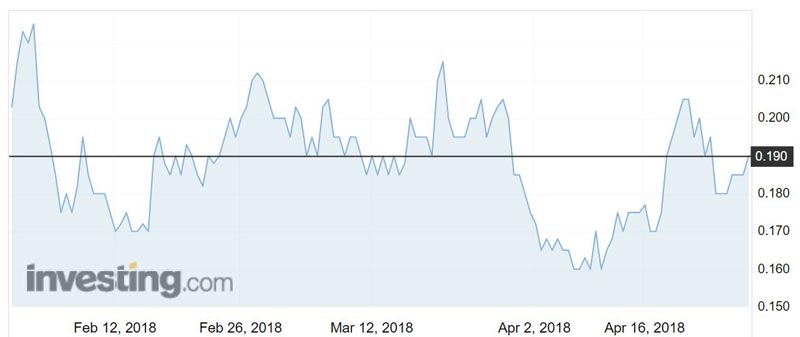Pilbara explorer Artemis eyes bigger resource as Radio Hill delivers high-grade nickel
Mining
Mining
Artemis Resources has hit shallow, high-grade nickel at its Radio Hill project in the Pilbara region of Western Australia — just days after revealing to Stockhead its aspirations to be more than just a gold play.
Drilling has intersected nickel mineralisation over widths of up to 25m and grades of up to 3.37 per cent.
Anything over 2 per cent is generally considered high grade for nickel.
Drilling also returned grades of up 2.9 per cent copper and 0.14 per cent cobalt.
Radio Hill, which started as an underground deposit in the Pilbara, is now being assessed for its potential to be an open pit operation – which is a much cheaper option.
Shares gained 2.7 per cent to trade at 19c on Monday morning.

Executive director Ed Mead told Stockhead that the Radio Hill deposit from the underground to the box cut – entrance to the underground mine – had never been drilled before.
“We are seriously looking at this as an open pit,” he said.
“Drilling has highlighted that there are zones within the disseminated of stringer and semi-massive sulphides which bumps the grade up and we’ve found a lot more there than what was previously indicated.”
Radio Hill – which comprises the underground mine, and up-dip and down-dip sections – has a historic resource of 3.9 million tonnes.
But Mr Mead thinks the resource could be bigger following the recent 7052m, 80-hole drilling program.
“At this stage the lower part is going to remain the same, but the up-dip portion I would probably suggest that based on drilling has increased,” he said. “So I expect the global number will be larger.”
Artemis also recently drilled five diamond holes and is awaiting the results.
The company expects to release a 2012 JORC-compliant resource by the end of May.
JORC refers to the mining industry’s official code for reporting exploration results, mineral resources and ore reserves, managed by the Australasian Joint Ore Reserves Committee